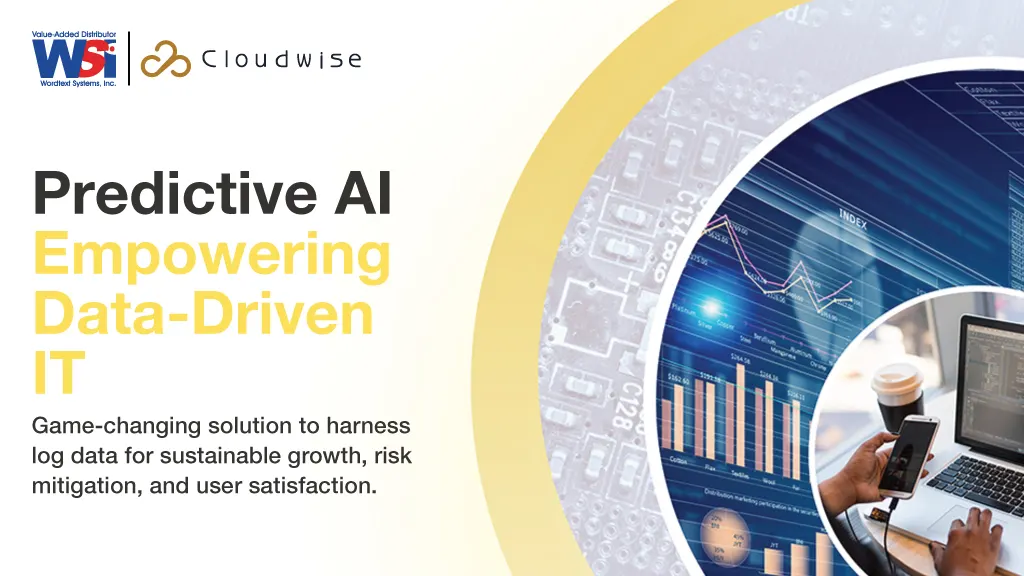IT teams face numerous challenges when it comes to managing systems and ensuring optimal performance. However, the advent of predictive AI, a powerful data-driven technique, has revolutionized IT operations by providing teams with invaluable foresight. This article explores the concept of predictive AI and its ability to empower IT teams through data-driven insights, enabling them to make informed decisions.
Predictive AI refers to the use of artificial intelligence and machine learning algorithms to forecast outcomes and trends by analyzing extensive data. This technique extracts hidden patterns, correlations, and anomalies from historical and real-time data, equipping IT teams with proactive problem-solving capabilities and enabling better decision-making.
IT teams generate massive amounts of data on a daily basis, including performance logs, system metrics, user behaviour, and network traffic. Predictive AI algorithms can analyze this data, identify patterns, and generate models that offer insights into future events, system behaviour, and performance trends.
Predictive AI offers several key benefits to IT teams:
- Proactive Issue Resolution By utilizing real-time data analysis, predictive AI can detect early warning signs of system failures or anomalies. This allows IT teams to take prompt action before issues escalate, minimizing downtime and improving overall system reliability.
- Optimal Resource Utilization Predictive AI empowers IT teams to optimize resource allocation by analyzing consumption trends and patterns. By understanding usage patterns, teams can allocate hardware and software resources efficiently, resulting in cost savings and improved performance.
- Capacity Planning Predictive AI models enable IT teams to forecast future resource requirements by analyzing historical usage patterns and growth trends. This proactive approach allows teams to scale systems to meet evolving demands, ensuring smooth operations.
- Performance Optimization Predictive AI helps IT teams identify areas that require performance enhancement by pinpointing performance bottlenecks. Armed with this insight, teams can take proactive measures to improve system efficiency, ultimately enhancing user experiences.
- Enhanced Security and Threat Detection Predictive AI algorithms analyze vast amounts of data to detect potential cybersecurity threats, anomalous behaviour, and network intrusions. IT teams can proactively mitigate risks by detecting and assessing these threats in real time, bolstering system security.
- Implementing Predictive AIEffectively implementing predictive AI requires access to well-structured and comprehensive datasets that capture relevant metrics, performance indicators, and historical patterns. Additionally, the following steps are crucial in the implementation process:
- Data Collection and Cleansing: IT teams must collect accurate and reliable data from various sources and subsequently cleanse and process it to ensure data quality for meaningful analysis.
- Model Development: Collaboration with data scientists and machine learning experts is key in developing predictive models that employ specific algorithms to analyze collected data, identify patterns and generate accurate predictions.
- Model Training and Validation: Predictive AI models undergo training using historical data, enabling them to learn and make predictions. Subsequently, teams validate these models against real-time data to ensure their accuracy and effectiveness.
- Integration and Automation: Once trained and validated, predictive AI models are integrated into IT systems and workflows. Automation plays a vital role in continuously monitoring data streams, updating models, and providing real-time insights to IT teams.
- Challenges and Future Directions Despite its benefits, implementing predictive AI may face challenges such as data quality, model accuracy, and the need for skilled personnel. Addressing these challenges requires ongoing efforts, continuous monitoring, and regular model updates.
Looking to the future, predictive AI is set to become an indispensable aspect of IT operations. Advancements in technology will lead to even more sophisticated predictive algorithms, thereby improving the accuracy of predictions.
By harnessing the power of predictive AI, IT professionals can navigate the complexities of the digital landscape, leading to efficient and resilient IT systems.


